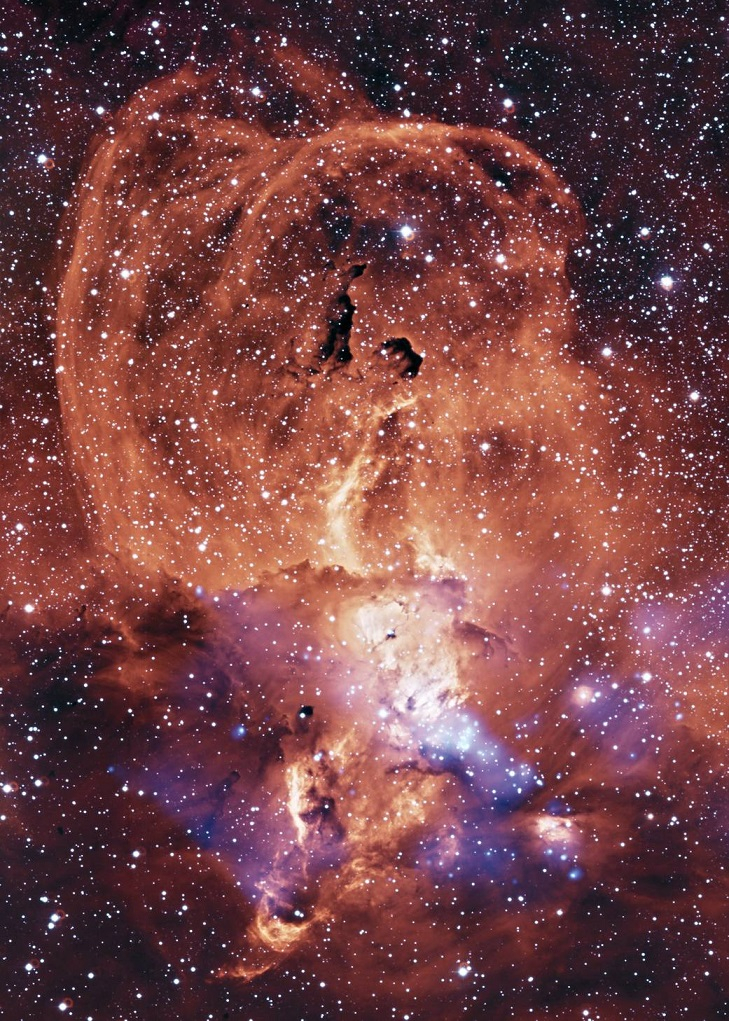NASA's Chandra X-ray Observatory recently shared a photo of a massive nebula located in the Milky Way galaxy. Due to its unique appearance, this cosmic object is also known as the Statue of Liberty Nebula.
The photo shared by the Chandra X-ray Observatory via Instagram features a colourful nebula that has been identified as NGC 3576. According to NASA, this nebula lies within the Milky Way's Sagittarius arm and is about 9,000 light-years from Earth's neighbourhood.
The Cosmic Statue Of Liberty

NGC 3576 is comically referred to as the Statue of Liberty Nebula due to the shape of its centre. In the photo shared by NASA's observatory, a shape resembling a silhouette of a person can be seen at the centre of the Nebula.
Based on the image, the silhouette-like shape resembles a person holding up a torch, just like the famous landmark in New York. This peculiar image was formed by the interactions of the various cosmic objects within the nebula.
Evolution Of Stars In NGC 3576
As explained by NASA, NGC 3576 features traces of the various processes that stars go through during their lifetimes. These included the gasses and dust expelled due to a star's supernova explosion and the winds produced by young stars.
"Such nebulas present a tableau of the drama of the evolution of massive stars, from the formation in vast dark clouds, their relatively brief (a few million years) lives, and the eventual destruction in supernova explosions," NASA explained in a statement.
Formation Of NGC 3576
According to NASA, the main shape of the nebula was formed by the large gas loops that came from supernova explosions. These gas loops helped in the formation of new stars within the nebula, which then created ionized fields of hydrogen gas.
Aside from these, winds produced by the young stars can be seen in the photo. Due to the Chandra observatory's x-ray imaging capabilities, these winds appear with a bluish colour.









